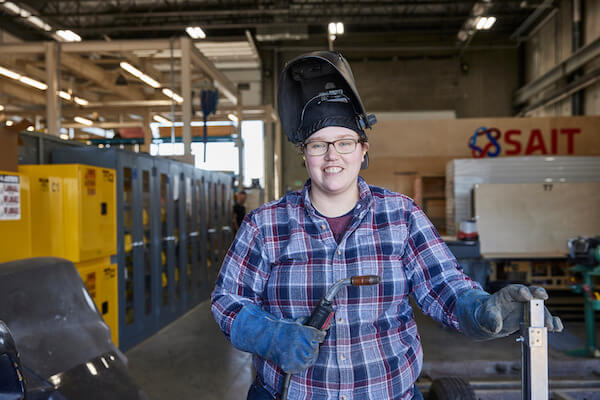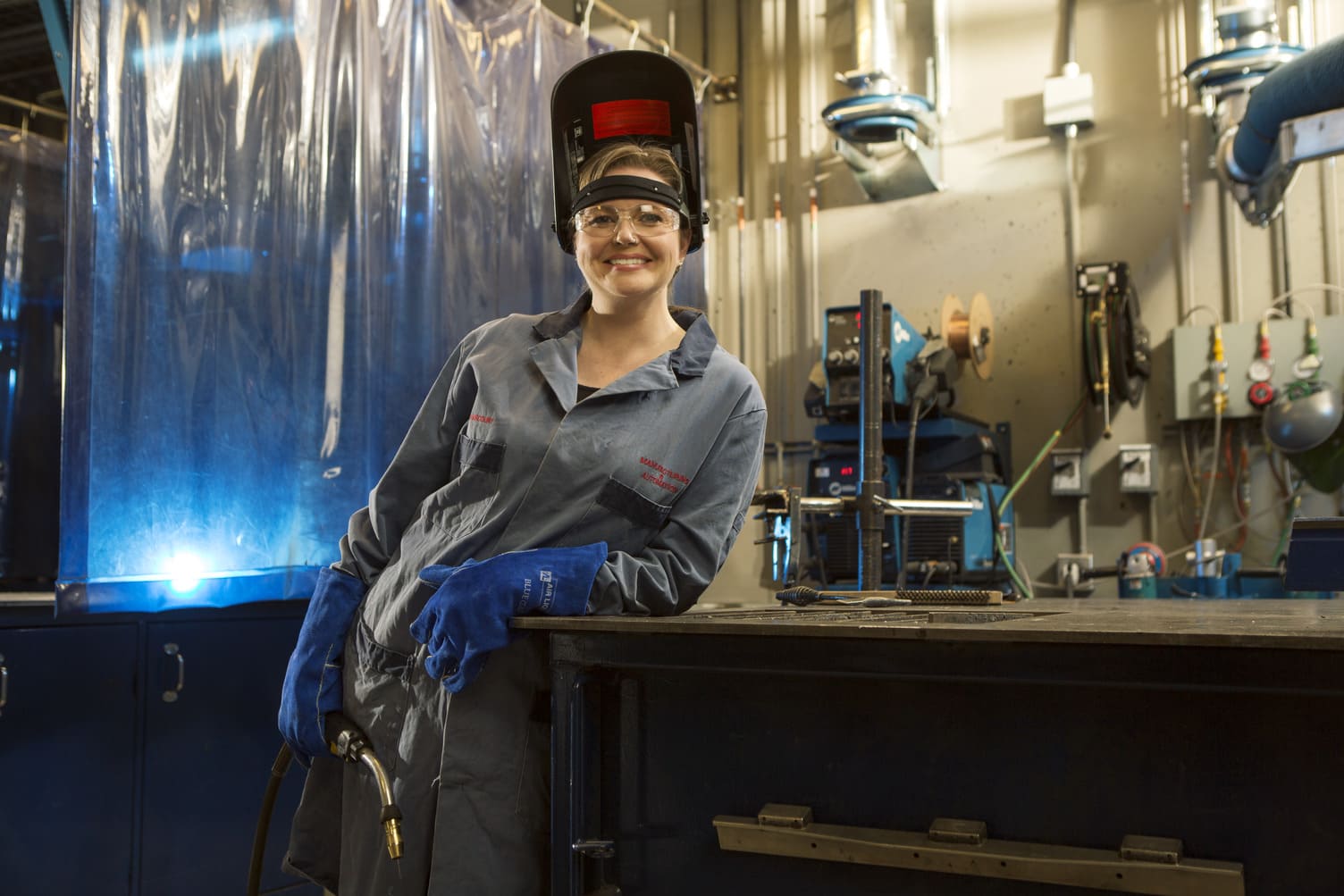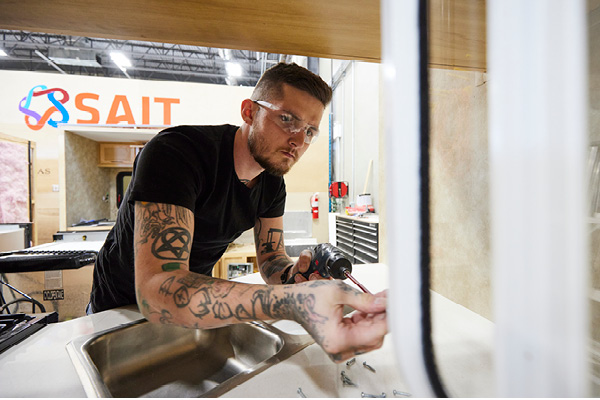On this page:
Overview
Learn to install, repair and maintain interior and exterior components on motorhomes, travel trailers, fifth-wheel trailers, truck campers, tent trailers and van conversions.
If you like a variety of work and have an aptitude for mechanical and electronic work and problem-solving – you will enjoy a career as a recreation vehicle service technician.
Duties may include:
- installing accessories
- performing pre-delivery inspections
- writing repair estimates and reading and writing repair orders
- troubleshooting, repairs and maintenance of propane gas and electric appliances such as furnaces, refrigerators, water heaters, ranges and air conditioners
- repairing fibreglass, body and structural components
- installing, repairing, replacing and maintaining roofs, siding, windows, doors, vents, awnings, floor coverings, cabinets, counters, plumbing and electrical systems, propane gas systems, batteries and charging systems.
You may also install trailer and fifth-wheel hitches and wire tow vehicles, as well as perform maintenance and repairs on trailer frames, undercarriage, and suspension.
Recreation vehicle service technicians typically:
- inspect, troubleshoot and diagnose units needing repairs and maintenance
- use testing equipment, troubleshooting techniques, manufacturers' specifications and websites to locate faults and perform repairs
- order repair parts and components using manuals, catalogues and websites
- use computerized and electronic devices for testing components
- communicate with supervisors, manufacturers and consumers to ensure timely, efficient and economical repairs
- dismantle faculty assemblies, repair or replace worn and damaged parts.
To work in this trade, certification is required. This means that you must either be a registered apprentice working under the guidance of a certified journeyperson or you must be a certified journeyperson yourself.
Recreational vehicle service technicians are skilled tradespeople who are self-motivated and enjoy working on various tasks.
This line of work is most fulfilling for those who enjoy being creative, working with their hands, and have an aptitude for mechanics, electrical and more.
To succeed in this trade, you should:
- have good manual dexterity and balance
- have the strength, stamina and ability to use proper lifting techniques to lift items over 25 kilograms
- have mechanical, electrical and electronic aptitude
- enjoy troubleshooting and problem-solving
- have good communication, organizational and learning skills
- be capable of working either independently or as a team member
- take pride in workmanship
- have a desire to attain a superior level of expertise
- be committed to maintaining safe work habits.
Upon successfully completing the required working hours and technical training periods, you'll be awarded a diploma in addition to journeyperson status by Alberta’s Apprenticeship and Industry Training.
This is a Red Seal Endorsed trade – a recognizable standard that allows tradespeople to work across Canada.
Careers and opportunities
Our graduates may work in the following occupations. Some careers require additional experience and education.
Associated National Occupational Classification (NOC) codes: 72423, 72020, 72410, 72411, 74203.
Apprenticeship training
The term of apprenticeship for a recreation vehicle service technician is three years (three 12-month periods), including a minimum of 1600 hours of on-the-job training and eight weeks of apprenticeship education each year.
Year 1 | Period 1
You’ll learn about workplace safety, tools and shop equipment. You’ll also cover plumbing, liquid petroleum systems, direct current electrical systems, appliance operations and accessories and mechanical and towing systems.
Training length: 8 weeks
Year 2 | Period 2
You’ll learn about standard practices and procedures, alternative current electrical systems, consumer products, appliances, exterior structures as well as mechanical and suspension systems.
Training length: 8 weeks
Year 3 | Period 3
You'll learn about inverter and solar systems, appliances, interior structures and components, slide-outs, leveling systems, auxiliary fueling systems, specialty haulers, welding, coaching and certification.
Training length: 8 weeks
Apprenticeship education performance
You must pass each section of the course and the AIT exam to succeed in apprenticeship education.
The passing grade for each period is no less than 50% in each course, with no less than a 65% average overall. A passing mark on each provincial exam and the interprovincial qualification (Red Seal Exam) is 70%.
View Alberta's Apprenticeship and Industry Training procedures
Training pathways
You can earn your journeyperson designation in the following ways.
The traditional training pathway begins with finding a job with an employer willing to indenture you as an apprentice. Once you are an apprentice, you will alternate between on-the-job training and educational periods.
You must apply for an apprenticeship through Alberta Apprenticeship and Industry Training before attending your first education period at SAIT.

Pre-employment pathway
SAIT’s Pre-employment Recreation Vehicle Service Technician program prepares you to enter into an apprenticeship with hands-on skills. Upon successfully completing the program, you’ll qualify to challenge the first-year Recreation Vehicle Service Technician apprenticeship exam.
Admission requirements
To enter an apprenticeship, you must have the educational qualifications required or recommended education for the trade to which you apply.
Entrance requirements are monitored and set by Alberta Apprenticeship and Industry Training.
Minimum requirements
Successful completion of the following courses:
- English 10-2
- Math 10-3
- Science 10
OR
A pass mark in all five Canadian General Educational Development (GED) tests
OR
Alberta Apprenticeship and Industry Training entrance exam.
Recommended requirements
Apprentices with an Alberta High School Diploma that includes the following courses:
- English 30-2
- Math 30-3
- Physics 20 OR Chemistry 20 OR Science 20
- Related career and technology studies (CTS) courses

MyTradeSecrets
Once you have begun working as an apprentice, you can attend SAIT to complete your technical training.
You'll register for technical training at SAIT on MyTradeSecrets or you can register by phone.
Transfer agreements
At SAIT, we have created transfer agreements with partner institutions to allow you to earn course credits toward your SAIT program based on your previously completed credentials.
Transfer Alberta search tool
Use the Transfer Alberta search tool to see all transfer agreements between Alberta post-secondary institutions (including those with the University of Calgary, Mount Royal University and Bow Valley College.)
Search transfer agreements in Alberta
There are no formal transfer agreements currently in place for this program.
Transfer options for graduates
When you have completed this program, you may continue your education at a partner post-secondary institution. These transfer agreements include partnerships within and/or outside of Canada.
Credits this program transfers to
- Available credits:
- 42
- Available credits:
- 45
Available intakes
Costs
2025/26 tuition and fees
The following costs are effective as of July 1, 2025.
This is a bring-your-own-device program with a standard computer hardware and software requirement. See the specific requirements on our computers and laptops page.
Books or modules, along with other items for classes, are approximately $800.
We recommend you don't purchase books or modules ahead of time as they might be outdated by the time you attend classes, and they cannot be returned to the Bookstore.Books and supplies for the second and third periods are purchased at SAIT’s Point Trotter campus.
This program requires personal protective equipment (PPE), which may be an additional cost.

Funding options for apprentices
Apprentices get to learn while they earn, but there are still costs to consider. Many resources are available at SAIT and federally to help support apprentices.
Information sessions
Prepare for a strong start in your chosen program or get the details you need to decide your future path.
Our expert staff and faculty are ready to answer your questions and provide information about the following:
- What sets SAIT apart
- An introduction to the program and area of study
- Admission requirements
- Future career paths
- Information on the earning potential and graduate employment rates.
Contact
Have more questions?
Apprenticeship training and registration
Apprenticeship and Industry Training Client Services

Oki, Âba wathtech, Danit'ada, Tawnshi, Hello.
SAIT is located on the traditional territories of the Niitsitapi (Blackfoot) and the people of Treaty 7 which includes the Siksika, the Piikani, the Kainai, the Tsuut’ina and the Îyârhe Nakoda of Bearspaw, Chiniki and Goodstoney.
We are situated in an area the Blackfoot tribes traditionally called Moh’kinsstis, where the Bow River meets the Elbow River. We now call it the city of Calgary, which is also home to the Métis Nation of Alberta.
